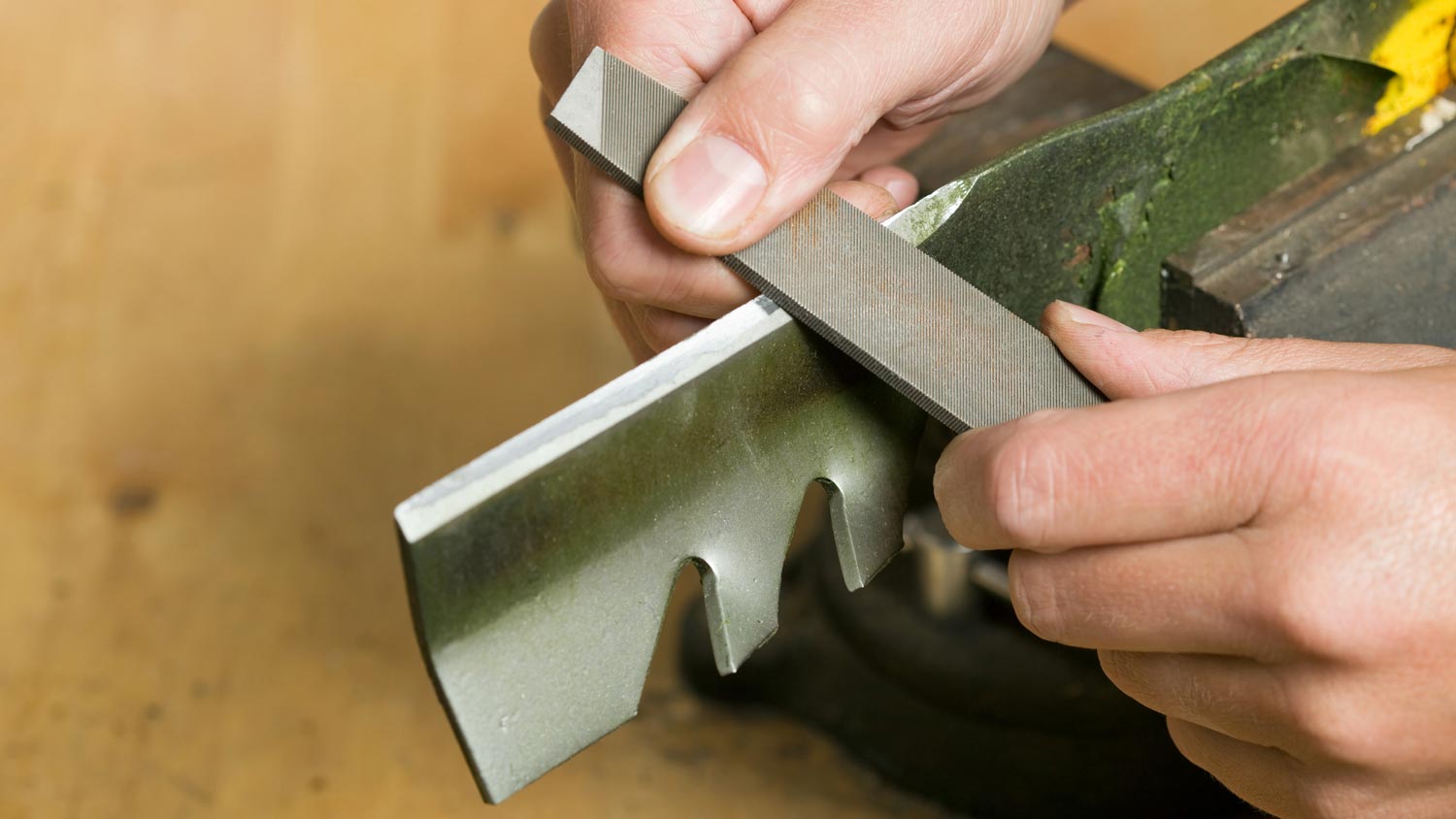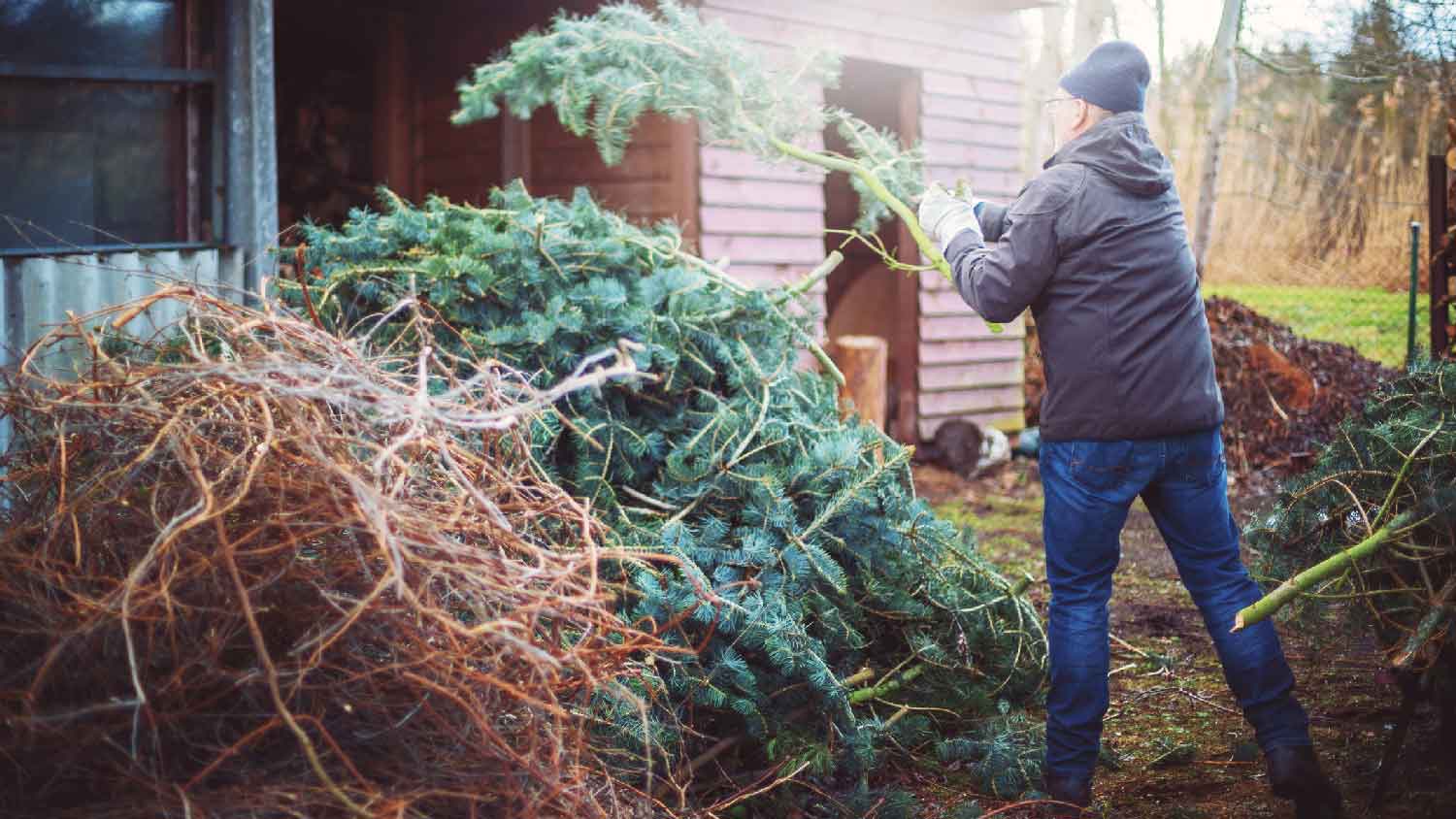
A yard cleanup can keep your lawn clean and prepare it for the next season. Find out the average yard cleanup cost and what can affect it.
Mulching blades can make fall yard work a breeze


Fall means pumpkin spice and watching all the beautiful leaves change color. But it also means raking up heaps of dead leaves littering the yard. Suddenly, your back is thrown out, and the whole weekend is gone. Your screams rival horror movies as you fill trash bags with leaves, only for the wind to knock them down, raking all over again.
By learning how to mulch leaves with a mower, lawn maintenance is a snap while benefiting local ecosystems. Before you call a landscaper or grab a rake, this guide on how to mulch leaves with a mower just might save your weekend (and your lower back).

Leaf mulching is the grinding of leaves into tiny pieces to create mulch, an organic matter that can be used as fertilizer to make vegetables, flowers, and other plants flourish. Leaf mulch is an excellent addition if you're starting a compost heap to improve your yard's soil quality.
While whole leaves house insects that birds, amphibians, and other animals eat once spring comes, leaf mulching is an effective, earth-friendly way to remove leaves littering your yard and put them into your compost.
Whether you use a specially-designed mulching mower or fit a standard mower with a gator blade, here's how to mulch leaves with your lawn mower.
You can mulch about six inches of leaves at once, so if the leaf piles are too thick, try spreading them out by hand or with a rake before running the mower on them.
A thin layer will mulch more easily than a thick layer, which can choke the lawn and jam the mower.
Use the highest setting on the mower when mulching leaves unless the grass is damp. This ensures that the leaves are shredded into tiny pieces.
Mow the lawn like you would any other time of year, except you're targeting the leaves, not the grass. Depending on your mower’s size, age, speed, and blade, it might take a couple of passes to get the leaves to shred into pieces around the size of a dime or smaller. If the grass is damp or leaves are wet, be mindful of the mower speed to prevent jamming and go slower if needed.
The leaf pieces shouldn't be minuscule enough to imitate sand, but you'll know you mulched the leaves to the right size when the little pieces are visible, but the grass is still dominant.
Depending on how many leaves have fallen where you live, you might need to mulch leaves with the mower once a week to prevent the leaf layer from getting too thick between mowings. Alternate between letting the shredded leaves lay on the lawn one week and then bagging up the mulched remains a week later.
Use the bagged mulch in your garden or winter-tender plants for a protective layer, compost it, or dispose of it per your local leaf litter regulations if there’s simply too much.
Your lawn and garden will benefit from the nutrient-enhanced soil the decomposing leaves create. The nitrogen emitted from them in the decomposition process also means you won’t need to buy commercial fertilizers.
In addition to placing the mulched leaves into garden beds and leaving them on the lawn itself, mulched leaves will decompose faster and more easily in compost piles than whole leaves. Putting your leaf matter back into the soil has way more benefits than bagging it up and taking the leaves to a landfill.

To get a level cut and effectively shred the leaves, the ideal height for leaf mulching is 2.5 to 3 inches. The mower deck shouldn't be too high or too low.
Be mindful of the blade you're purchasing. Like their namesake, gator blades should be sharp and pointy like alligator teeth, not blunt and square. A good blade for mulching is one that's sharp and angled towards the direction it's mowed in. A blade that bends away from the contact point won't shred the leaves as effectively.
Keep mower blades sharpened and replace them when necessary, especially during and after peak leaf-shedding times.
Wait for wet leaves to dry and crisp up before trying to mow them. If you must mow wet leaves because the layer got too thick, spray some silicone on your mower first. String trimmers, leaf shredders, and other lawn maintenance tools often mulch wet leaves better than mowers.
Most leaves can be easily mulched, except for pine needles. Too many of them will jam mower blades.
If your home is very tree-dense and it often rains in peak leaf-shedding season, you may need to look into LeafFilter cost and other methods of keeping wet leaves from accumulating on the ground.
Using a lawn mower to mulch fallen leaves is faster than raking them, but a large and tree-dense yard can make hiring a pro worth it. Professional landscaping costs $50 to $250 per service for basic lawn maintenance, leaf disposal, and leaf mulching. It may be closer to $50 to $150 per hour for large properties and more intense projects.
To DIY, buying a mower can cost as little as $100 for a simple model and up to $4,000 for a ride-on mower or large tractor mower. Standard and professional-grade mowers can be adapted for mulching use by swapping out standard mower blades for gator blades with teeth. Gator blades effectively mow grass and mulch dried leaves, costing about $20, but the price varies by mower type.
If you’re not going to use all the leaf mulch from a tree-heavy yard, you may want to consider hiring a local junk removal company or renting a dumpster to dispose of the remains. Your decision to DIY or hire a pro depends on your yard size, budget, and time constraints, and how often you need the leaves mulched.
From average costs to expert advice, get all the answers you need to get your job done.

A yard cleanup can keep your lawn clean and prepare it for the next season. Find out the average yard cleanup cost and what can affect it.

Autumn leaves are beautiful but also leave quite a mess to clean up. This guide will help you budget for your leaf removal cost this fall.

Allowing leaves to decompose naturally can add vital nutrients back into your soil. Learn whether you should rake leaves and why.

A leaf removal service can clear your yard of fallen leaves. Learn why to hire a leaf removal service, what to look for, and how the service works.

If autumn brings a blanket of leaves to your yard, you’ve got options. From mulching to free leaf removal days, here’s what to do with leaves in your yard.

If your yard has seen better days, a professional clean-up may be in order. Use these lawn care questions to prep yourself for a conversation with a pro.